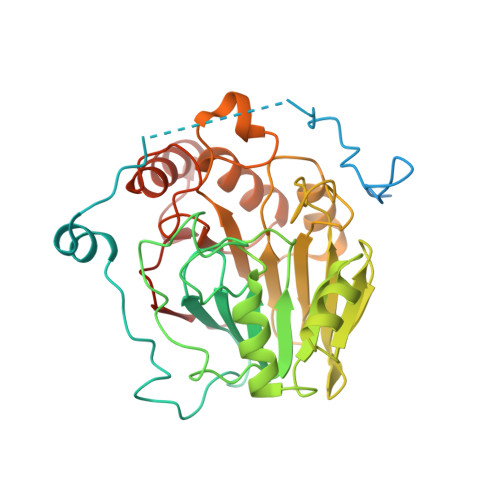Structure of human N-acylphosphatidylethanolamine-hydrolyzing phospholipase D: regulation of fatty acid ethanolamide biosynthesis by bile acids.
Magotti, P., Bauer, I., Igarashi, M., Babagoli, M., Marotta, R., Piomelli, D., Garau, G.(2015) Structure 23: 598-604
- PubMed: 25684574
- DOI: https://doi.org/10.1016/j.str.2014.12.018
- Primary Citation of Related Structures:
4QN9 - PubMed Abstract:
The fatty acid ethanolamides (FAEs) are lipid mediators present in all organisms and involved in highly conserved biological functions, such as innate immunity, energy balance, and stress control. They are produced from membrane N-acylphosphatidylethanolamines (NAPEs) and include agonists for G protein-coupled receptors (e.g., cannabinoid receptors) and nuclear receptors (e.g., PPAR-α). Here, we report the crystal structure of human NAPE-hydrolyzing phospholipase D (NAPE-PLD) at 2.65 Å resolution, a membrane enzyme that catalyzes FAE formation in mammals. NAPE-PLD forms homodimers partly separated by an internal ∼ 9-Å-wide channel and uniquely adapted to associate with phospholipids. A hydrophobic cavity provides an entryway for NAPE into the active site, where a binuclear Zn(2+) center orchestrates its hydrolysis. Bile acids bind with high affinity to selective pockets in this cavity, enhancing dimer assembly and enabling catalysis. These elements offer multiple targets for the design of small-molecule NAPE-PLD modulators with potential applications in inflammation and metabolic disorders.
Organizational Affiliation:
Department of Drug Discovery and Development, Fondazione Istituto Italiano di Tecnologia, Via Morego 30, 16163 Genoa, Italy.


















